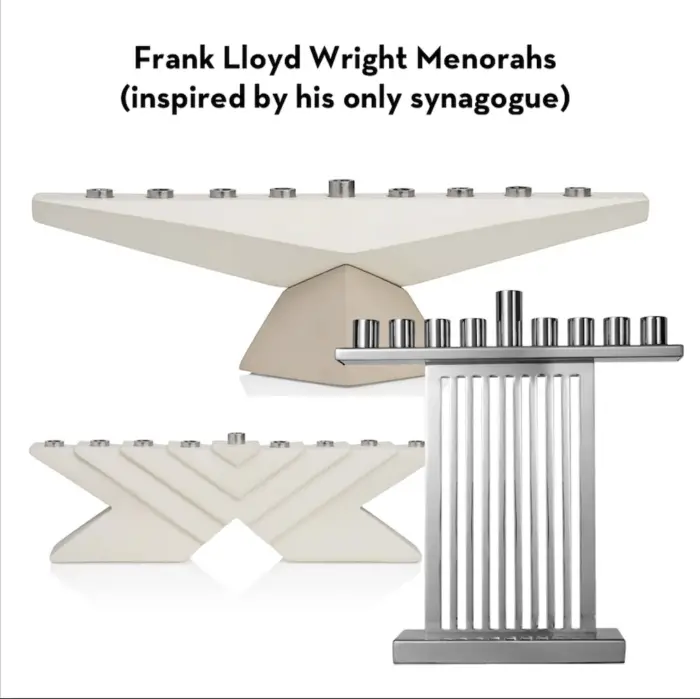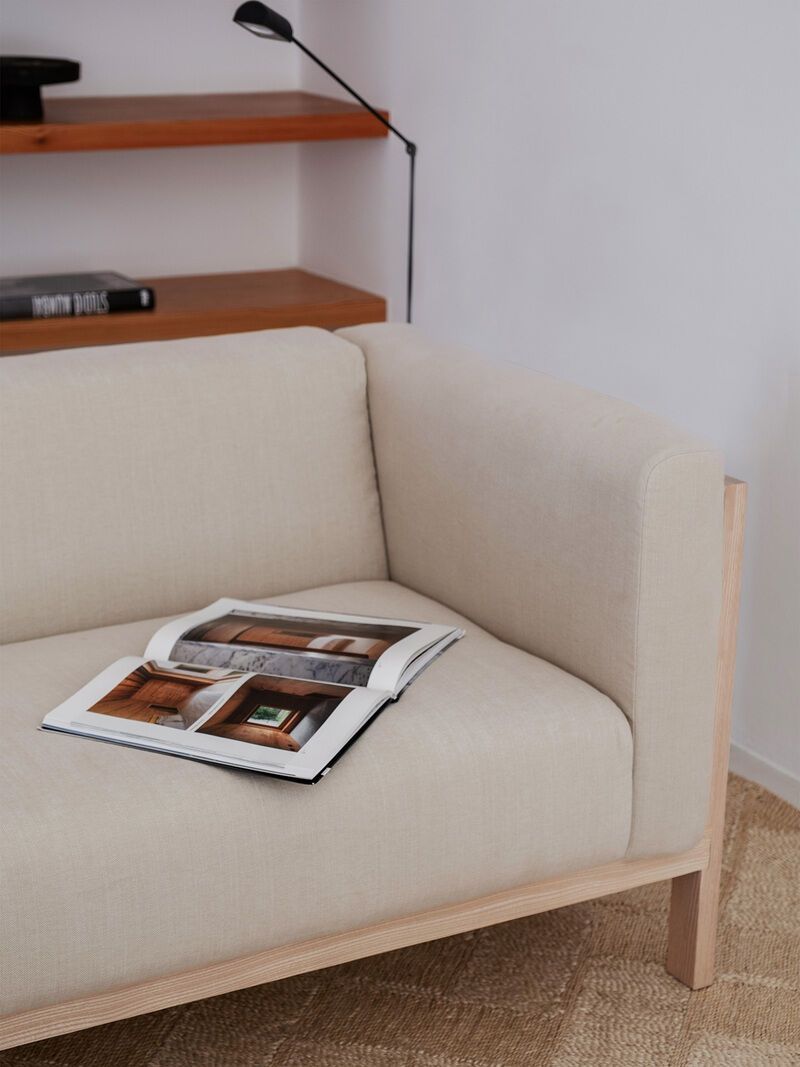Unveiled to the public five months after his death, was commissioned in 1953 when was 85 years old and remains the only synagogue ever designed by the great American architect. Listed as a National Historical Landmark in 2007, it’s now one of seventeen Wright buildings most worthy of preservation.

Wright is now known to have often hurled anti-Semitic remarks at Jewish employees at his Taliesin house and studio and made anti-Jewish comments about architectural colleagues Richard Neutra and Rudolf Schindler. He also sympathized with the anti-Semitic and isolationist ideas of Henry Ford and Charles Lindbergh before and during World War II, so the idea that his one Jewish House of Worship has inspired three Menorahs may seen ironic.
But, according to author Joseph Siry*, by the time Wright was 85, the architect’s Unitarian religious background led him to develop a respectful attitude toward Judaism and his experience working at the Chicago firm of Adler & Sullivan exposed him to innovative synagogue designs at the turn of the century.
Wright worked closely with Rabbi Mortimer J. Cohen over the next few years and the synagogue was unveiled on September 20th, 1959 in Elkins, Pennsylvania, just 5 months after Wright’s passing.

Wright sought to evoke the image of cupped hands with the building’s design, as if congregants were “resting in the very hands of God.” The main structure, suspended from a 160-ton steel tripod frame, creates a 1,030-seat space, free from internal supports.

A pyramidal translucent roof, comprised of a double layer of sanded white glass and corrugated fiberglass, infuses the space with ethereal natural light during the day and glows like a beacon at night. When asked why Wright had chosen plain white over amber-tinted glass, he answered: “Since this is to be God’s Temple, I prefer to have him color the glass.”

The Mayan Revival style building is layered with symbolism. Its angular mountain-like profile and the purposeful ramps leading to the main sanctuary are suggestive of the ascent to Mount Sinai. The roof’s three ridges display abstract representations of seven-branched Menorahs, while the entry’s canopy geometrically symbolizes the hands of a rabbi joined to pronounce the benediction.

Inside, a forty-foot concrete monolith, representing the stone tablets given to Moses, serves as a dramatic backdrop for the wooden ark containing the Torah scrolls.

Frank Lloyd Wright Menorahs
The Menorahs

Three different menorahs are offered from both The Frank Lloyd Wright Foundation and the Preservation of Beth Sholom. One crafted of stainless tell and the other two of concrete, they take their design cues and shapes from Wright’s exterior and interior architecture of Beth Sholom.
DS Beth Shalom Menorah
 Inspired by Frank Lloyd Wright’s designed Beth Shalom Synagogue, this menorah is crafted of fine stainless steel.
Inspired by Frank Lloyd Wright’s designed Beth Shalom Synagogue, this menorah is crafted of fine stainless steel.

Holds standard candles or small-size oil cups
Approx. 12″W x 3.3″D x 13″T
Item Weight (Lbs.): 9.8
Hand wash
Imported
or here
DS X Menorah

This menorah is inspired by the architecture of Beth Shalom Synagogue, Wright’s only synagogue among a relatively small number of religious commissions. Its power as a building stemmed from the fruitful collaboration between Wright and the congregation’s Rabbi, Mortimer J. Cohen, and is symbolically and liturgically grounded in Judaic tradition.
Dimensions: 14″ x 4″
Concrete with silver accented candle cups
DS Ark Menorah

Inspired by the work of Frank Lloyd Wright, this beautiful sculptural menorah is handcrafted of concrete and aluminum and was inspired by the architecture of Beth Sholom.
Holds standard menorah candles or small oil cups
Dimensions: Approx. 14.5″W x 4″D x 5″T
Item Weight (Lbs.): 5.5
Hand wash
Imported
Please note that each menorah is also available from the but at higher prices than shown because each purchase supports their mission to inspire people to discover and embrace an architecture for better living through meaningful connections to nature, the arts, and each other.
images and information courtesy of and
*




